Like the rest of the business world, marketing and PR leaders have been busily attempting to get AI incorporated into their operations so they can enjoy the productivity benefits that the tech has been dangling before them. But in this fast-moving effort, many are realizing that AI implementation is just the beginning of the problem solving that will be necessary. As with most tech progress, it’s the human components of success that are the biggest challenges, new research from The Plank Center for Leadership in Public Relations reveals.
This year’s edition of the group’s North American Communication Monitor affirms that the digital transformation of communication is dependent on human behavior, not technology. Senior communication leaders in the US and Canada are experiencing challenges of understanding human emotions, the strong need for human interaction in the creative process, and the high cost of training staff and upskilling. They point to issues with tasks and processes not being curated for digitalization (40 percent) and with those who lack experience in data and teach competencies (39 percent).
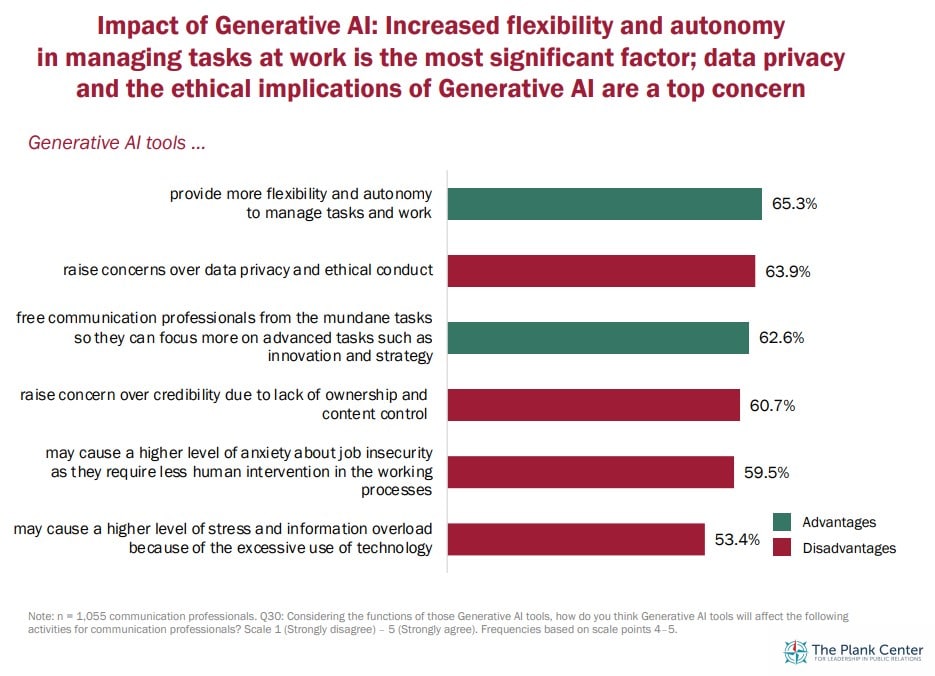
Roughly 20 percent of the respondents describe their communication units as being advanced in AI usage and communication technology. Slightly more,(23 percent) say their units are above average in communication technology use (19 percent above average for AI use). Only 14 percent describe their communication units as being below average in AI and communication technology use.
“According to our findings from this edition of NACM, organizations do face notable challenges at the technological and/or infrastructural levels such as high data, bandwidth/cloud requirements and insufficient IT support when introducing Generative AI. However, communication professionals are more concerned about the inability in Generative AI itself to address human emotions, nuances and the true human interaction and creativity in the communication process,” said Juan Meng, Ph.D., lead researcher of NACM, Professor of Public Relations at the University of Georgia. “The lack of human touch presents challenges at the individual level for communication professionals as they need to be more thoughtful about issues such as ethical concerns, data privacy, ownership, credibility, and the gap between AI thinking and human implementation.”
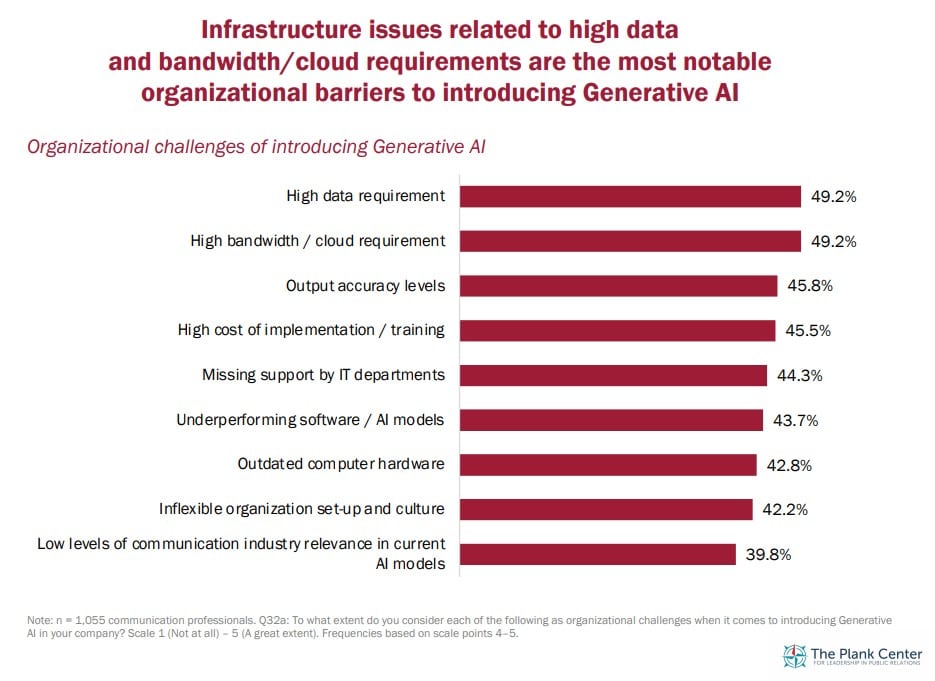
Other key findings from the report include:
DEI
Diversity, equity and inclusion efforts still focus on ethnicity (63%) and age (60%) more often than religious and spiritual beliefs (50 percent). Communication departments and agencies are most heavily involved internally in celebrating and creating DEI (64 percent) and implementing (63 percent) DEI policies and less involved in informing external audiences about DEI-related matters (56 percent).
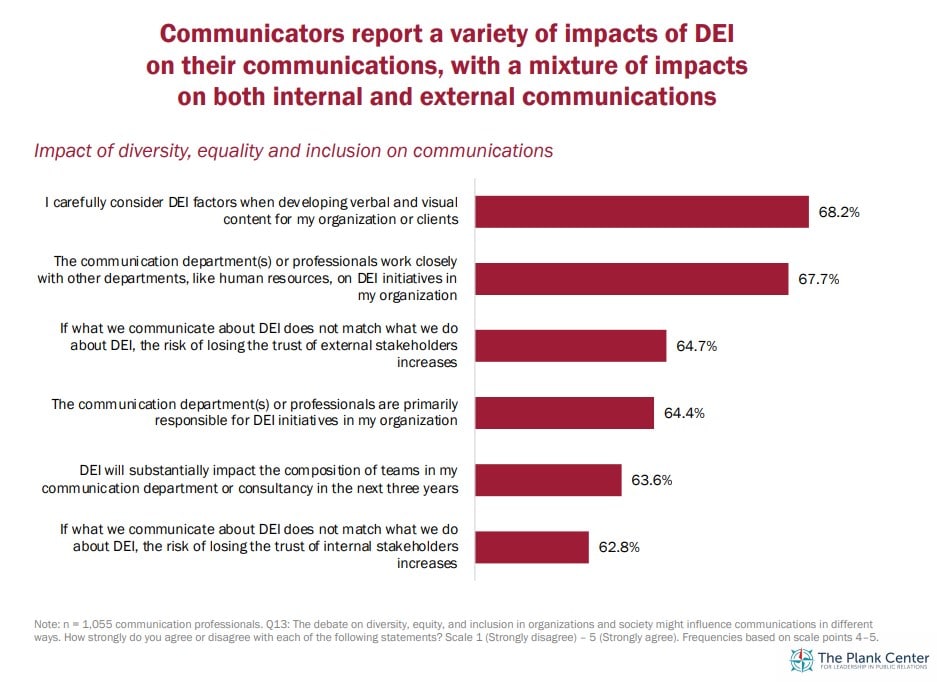
Leadership
More than two-thirds of communication professionals in North America report that their communication leaders had increased levels of empathy during the last year (68%) and are generally empathic when communicating with colleagues (71 percent).
Commitment
Overall, communication professionals are committed to their organization (70 percent), are engaged at work (68 percent), and experience positive mental health (50 percent). However more than one-third intend to change jobs in the coming year (37 percent). Younger communication professionals appear less satisfied, reporting lower commitment, engagement and positive mental health. They also have the highest turnover intentions.
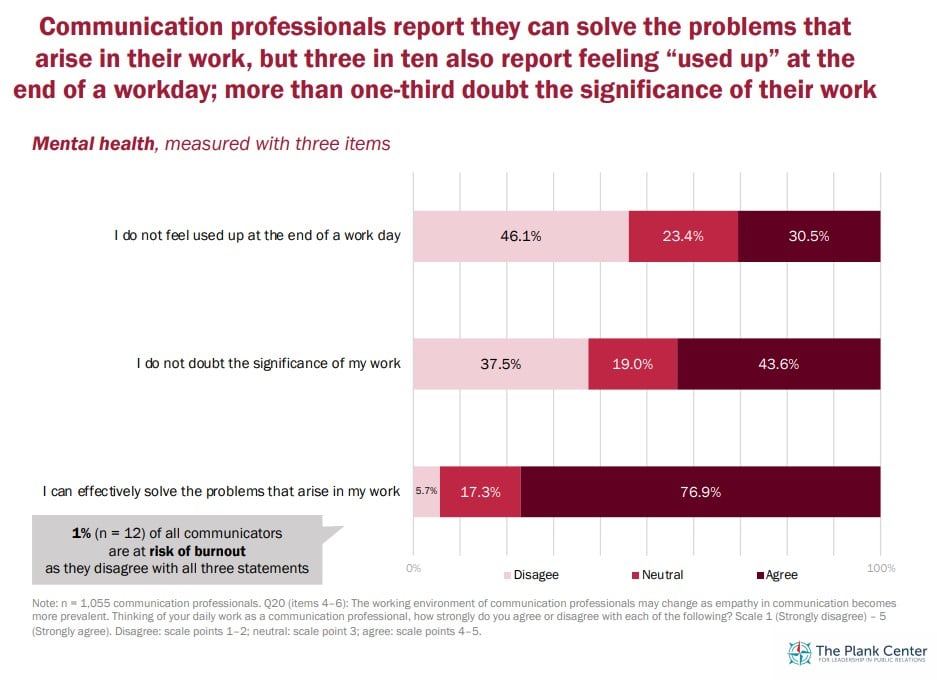
Trust
Trust is dropping as the most important strategic issue for communication management in the United States and Canada. In 2018-19, 50 percent of respondents cited trust as the top strategic issue. That fell to 35 percent in 2020-21 and 34 percent in 2023-24.
National focus
In the United States, strengthening the communication function’s decision-making role with top management (33 percent), building trust (33 percent) and supporting DEI (30 percent) are the three most important strategic issues reported this year.
In Canada, supporting DEI (40 percent), building trust (36 percent) and strengthening the communication function’s decision-making role with top management (27 percent) are the top three most important strategic issues reported.
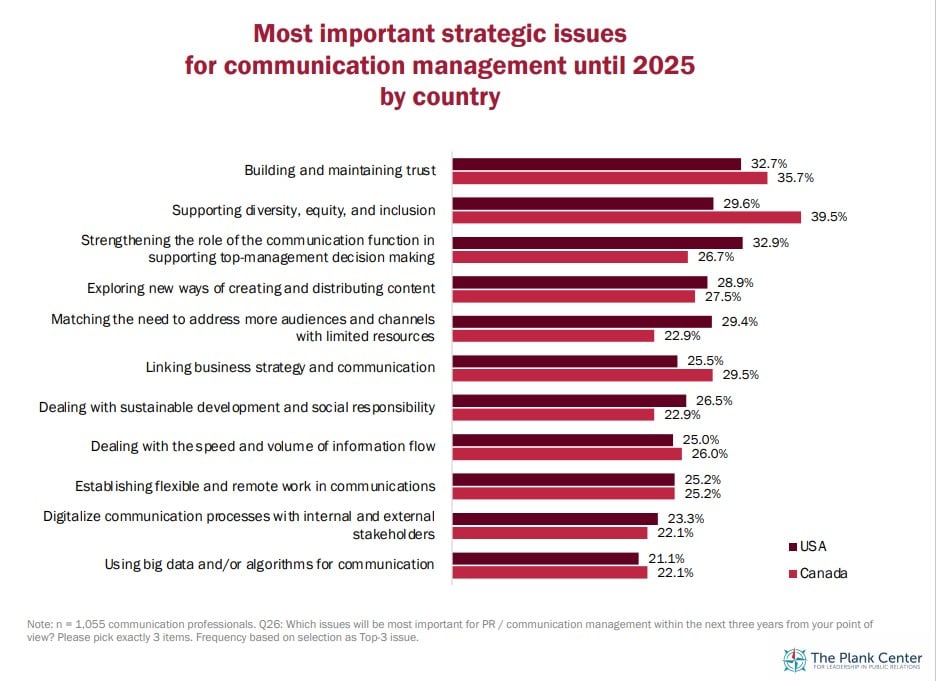
Download the full report here.
The 2023-24 NACM surveyed 1,055 communication professionals in the United States and Canada. The NACM is part of the Global Communication Monitor series, the largest regular global study in public relations and strategic communications. The series covers over 80 countries with similar surveys conducted in Asia-Pacific, Europe and Latin America.








